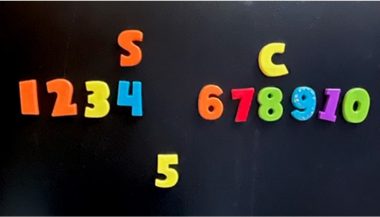How I Track My Biological Cycles With Parkinson’s Disease
A columnist shares the simple way he keeps track of good and bad days

I’ve written previously about how Parkinson’s disease (PD) “breaks” the biological clock that regulates our wake-sleep cycle, disrupting our daily routines and sleep. For me, it manifests most acutely during “off periods,” when everything in my body shuts down.
As a 2020 article published in The American Journal of Managed Care notes:
“Several terms have been used to describe types of OFF periods; however, all refer to a point at which the motor symptoms and/or nonmotor symptoms of PD return or worsen, thus negatively affecting the patient’s ability to function. … Symptom severity may be accompanied by irregular occurrences, which may also lead to underreporting because patients might not recognize it as a symptom and not record or report it.”
A couple years ago, one reader questioned what could be done to make our bio clocks work better. At that time, I didn’t know. But that response wouldn’t have been very helpful.
The broken bio clock and Parkinson’s disease are inseparable. According to an article published in 2017 in Neuroscience Bulletin, “Circadian dysfunction has been observed in PD patients and animal models, which may result in negative consequences to the homeostasis and even exacerbate the disease progression.”
Indeed, I find that my cycles of good and bad days have an impact on my well of resources, or ability to maintain homeostasis. When the well is depleted, I don’t have enough energy reserves to utilize the strategies in my Parkinson’s self-management toolkit.
Over time, I’ve gotten better at managing my broken biological clock and my cycles of good and bad days.
I’ve recognized that I usually follow a 10-day cycle, which includes a series of three or four “good days,” with minimal or manageable symptoms, followed by one or two “bad days,” with more severe symptoms. Around day five and 10, my typical bad days, I must pay extra attention to stressors and symptom management.
In addition to my self-management toolkit and my practice of using the gentle observer during meditation, Mrs. Dr. C and I have added magnets to the refrigerator.

Magnets on the refrigerator serve as a communication tool for Dr. and Mrs. Dr. C. Here, Dr. C is on the fifth day of his 10-day cycle. (Photo by Mrs. Dr. C)
Our simple tracking system
The magnets, which we found in the children’s toy section at a local big-box store, allow me to convey to Mrs. Dr. C where I’m at in my 10-day cycle. It was the best workable solution for us. Despite my vision loss, I can see the bright colors against the black sidewall of the fridge. Writing, erasing, and then rewriting on a paper calendar seemed like too much effort, especially with the decline in my Parkinson’s handwriting.
When we’re living day to day, it can be easy to lose track of what we expect my Parkinson’s body and brain to do in the days ahead. Magnets aren’t a perfect system, especially when we make commitments several months in advance. It does, at least, give Mrs. Dr. C the chance to plan for days that are likely to be bad, allocating time for rest and recuperation. It also allows us to capitalize on the good days.
I’ve added “C” and “S” magnets to the fridge as well. “C” represents additional stress, which usually adds another bad day to the cycle. “S” is for “sweet spot” — a day that runs remarkably smoothly. They are rare, but when they happen, I get one less bad day in the cycle.
The only drawback is that sometimes life happens, and I must push through a bad day. When that occurs, it resets the whole cycle. It doesn’t take much for me to backtrack and have another bad day. I reset the sequence, using the magnets to communicate where I’m at, when I’m headed out of the dark and into the light.
Daily fluctuations include the “go, no-go” effect, broken mornings, and lucid windows. Homeostasis dysregulation is part of the broken bio clock problem.
Making necessary adaptations and fitting life into the cycles requires training, including gentle observation and ordinary calmness practices. These brain training tools are even more necessary when learning how to effectively utilize my knowledge of the 10-day cycle.
I need to discern a good day from a bad day, separate from external stressors, and communicate this to my support partner. This is not an easy assignment, so we use the kitchen magnets. It’s surprising that something so simple can be so helpful.
Note: Parkinson’s News Today is strictly a news and information website about the disease. It does not provide medical advice, diagnosis, or treatment. This content is not intended to be a substitute for professional medical advice, diagnosis, or treatment. Always seek the advice of your physician or another qualified health provider with any questions you may have regarding a medical condition. Never disregard professional medical advice or delay in seeking it because of something you have read on this website. The opinions expressed in this column are not those of Parkinson’s News Today or its parent company, Bionews, and are intended to spark discussion about issues pertaining to Parkinson’s disease.








Janne Fredsbo
Dear mr. and mrs. C.
Once again a great big heartfelt Warm Thank You for extending your ways to us all again. You are the greatest teacher of mine ever. This time through a simple tracking system. I am simply awestruck by you two! We shall indeed apply such an easy fridge system to help us keep track of "The Scream!" As we decided the working title for the Parkinsons Disease. You called yours The Beast I believe, but since my husband is norwegian so far we've decided on "The Scream" (after Munch wondrous painting.) Indeed it does add a bit of distance if you have a name for it!
Wishing you 'n yours a most joyous holidays and festive season. Kindest Regards from Jan, Copenhagen
Dr. C.
Hello Janne ~ We love the image of "The Scream"... so appropriate! Thanks for the positive feedback. It really inspires us to keep going. BTW, my wife is a family historian and has discovered that Dr. C.'s side has a huge number of Dutch immigrants, arriving in "New Amsterdam" in the mid-1600's. All of whom seem to have different last names from their parents and their children!!!
Happy Holidays and best wishes to you and yours...
Dr. C. and Mrs. Dr. C.
Judy Carmean
I’m working with a homeopath nutritionist on pulling metals out of my system using diet changes and supplements. In your opinion does high metal concentration in your body impact Parkinson’s and eliminating the metals impact Parkinson’s symptoms? I am 67 and was diagnosed 6 months ago.
Mike.
Dr.C.
What a great way to keep a handle on your day to day. For us life happens and that changes everything. Life with Parkinson’s can be so unpredictable. When my life gets out of balance of course, I rely on Mindful movement which now includes walking. Since I have been taking Neuralli a probiotic I can now walk without a stick. I definitely still have to work at it. Plus my digestion that is constipation no longer plagues me. Neuralli is not a cure for Parkinson’s but it helps to relieve MY symptoms. I have just received my 2nd order. If you can afford it I highly recommend it Blessings, Mike